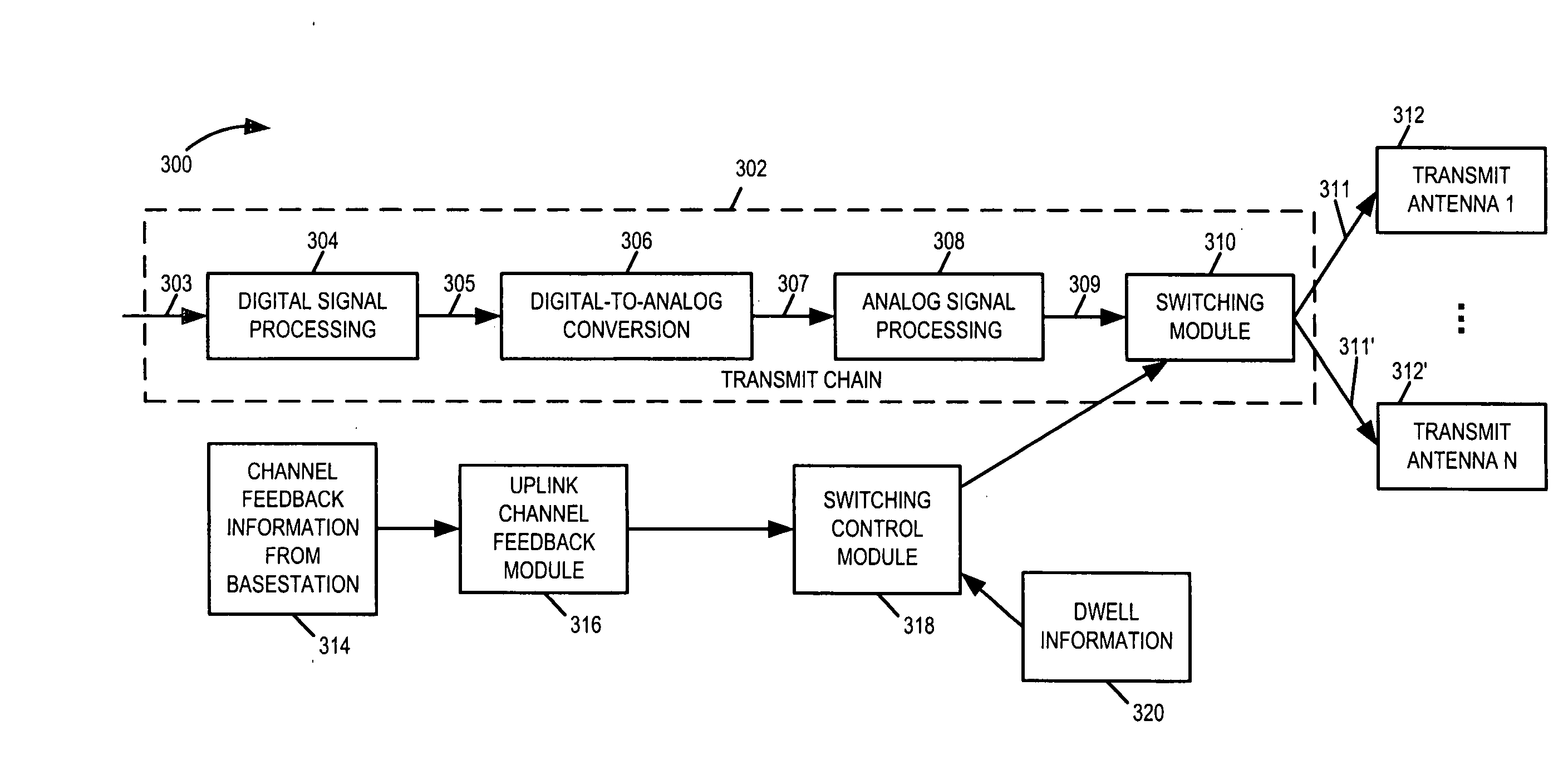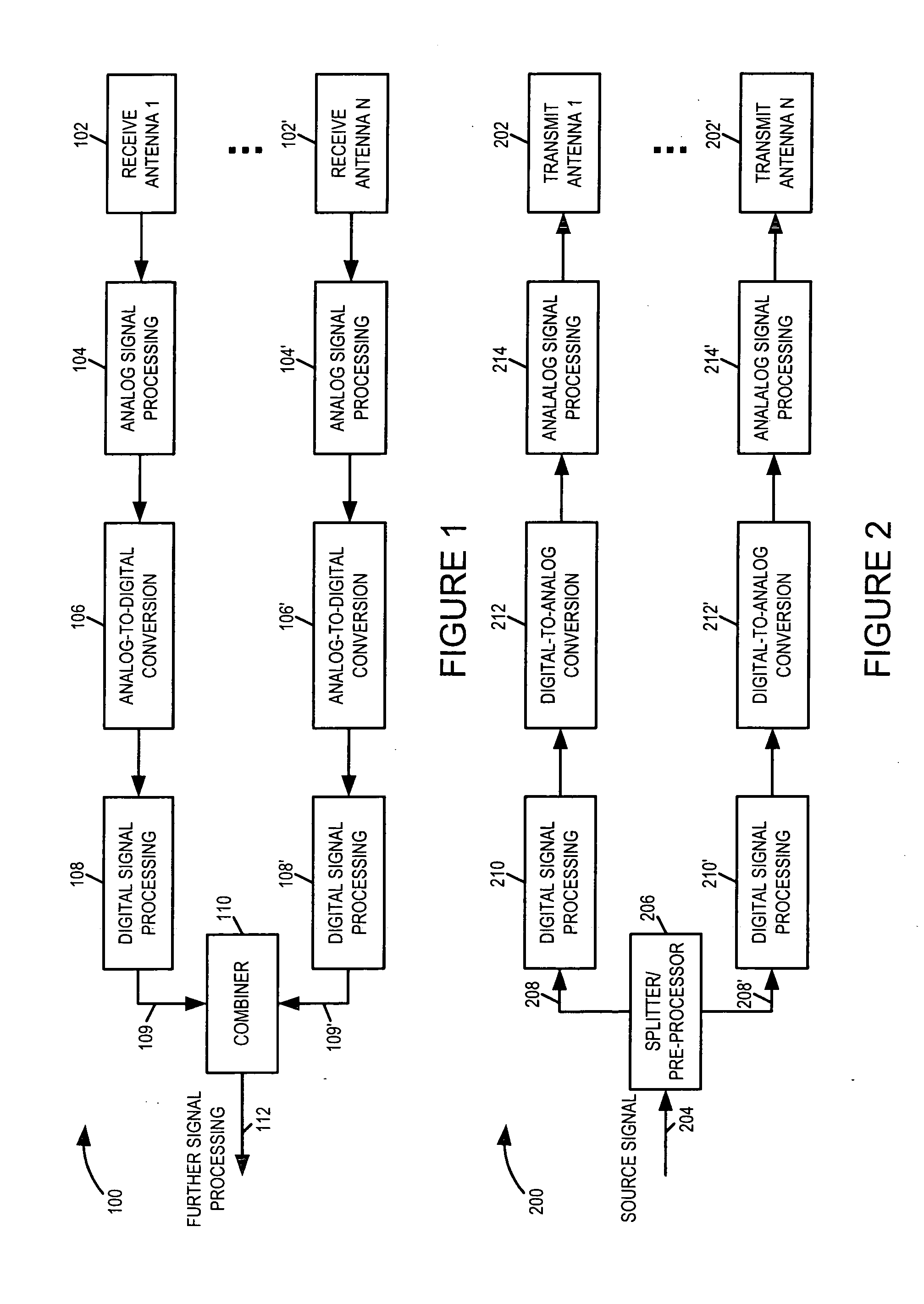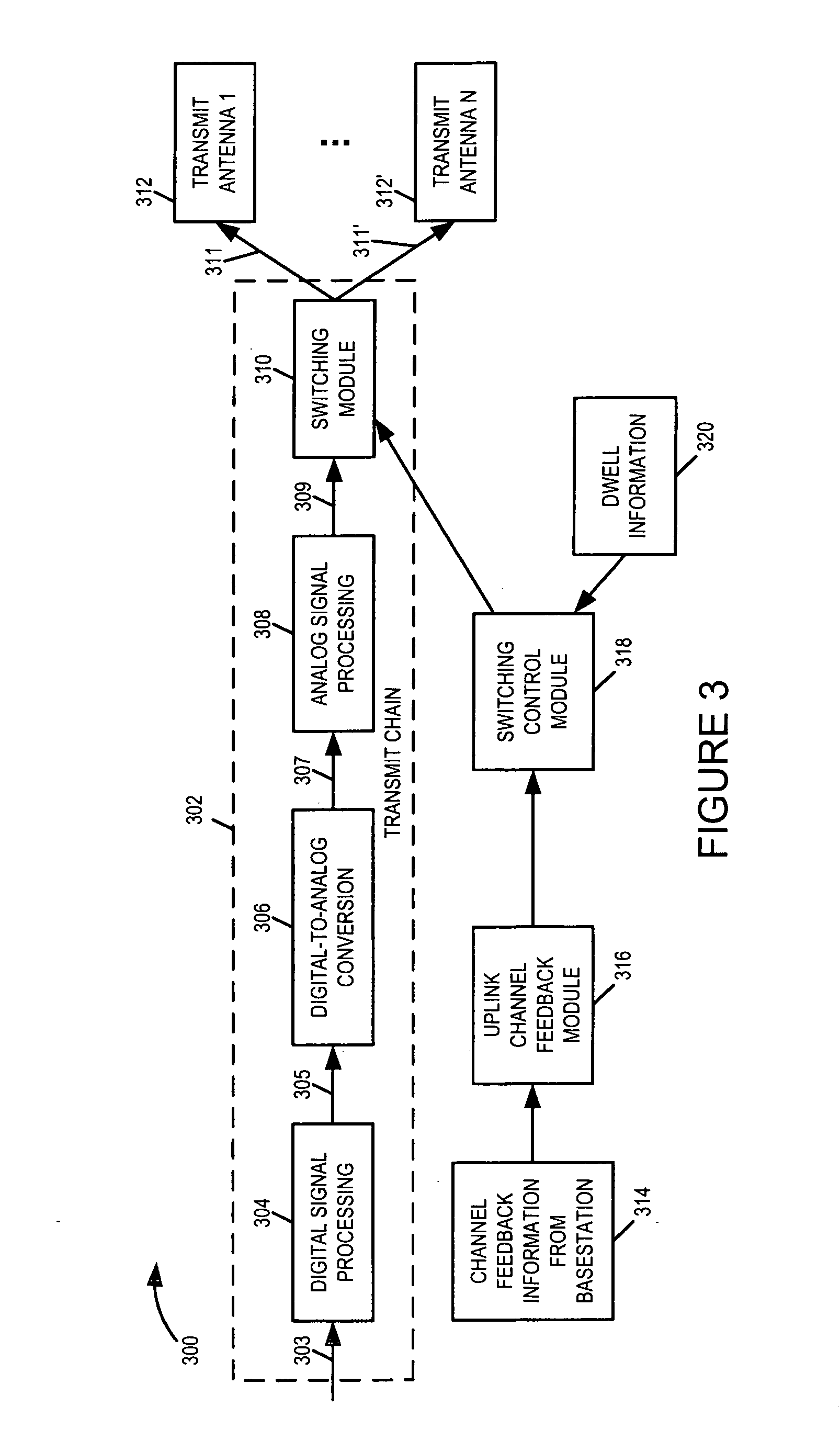Methods and apparatus of providing transmit and/or receive diversity with multiple antennas in wireless communication systems
a wireless communication system and antenna technology, applied in the field of communication systems, can solve the problems of reducing system capacity and/or user service experience, deteriorating link reliability of wireless channels, and difficulty in realizing transmit diversity
- Summary
- Abstract
- Description
- Claims
- Application Information
AI Technical Summary
Benefits of technology
Problems solved by technology
Method used
Image
Examples
Embodiment Construction
[0045] Although the principle of diversity helps to improve the wireless link reliability, the use of multiple transmit and / or receive chains increases the cost and complexity of the transmitter and / or receiver. Typically, in a wireless communications system, there are many wireless terminals for each base station deployed. The wireless terminals may be, e.g., consumer owned and operated portable battery powered mobile devices such as cell phones or cellular data communication devices. The increased cost and complexity are particularly important considerations at the wireless terminal, e.g., mobile node, side. Various aspects and features of the present invention are directed to wireless systems equipped with multiple antennas that can achieve diversity with a minimal increase in cost and / or complexity.
[0046] Various aspects of providing transmit diversity, in accordance with the present invention, shall now be described. In accordance with various embodiments of the invention, tra...
PUM
 Login to View More
Login to View More Abstract
Description
Claims
Application Information
 Login to View More
Login to View More - R&D
- Intellectual Property
- Life Sciences
- Materials
- Tech Scout
- Unparalleled Data Quality
- Higher Quality Content
- 60% Fewer Hallucinations
Browse by: Latest US Patents, China's latest patents, Technical Efficacy Thesaurus, Application Domain, Technology Topic, Popular Technical Reports.
© 2025 PatSnap. All rights reserved.Legal|Privacy policy|Modern Slavery Act Transparency Statement|Sitemap|About US| Contact US: help@patsnap.com



